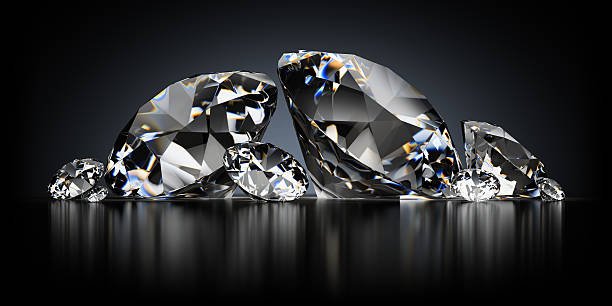Deciding Between Traditional and Modern Engagement Rings All Entries

Engagement rings are among the most highly personal products on the market. They carry a deep sentiment of everlasting commitment for a life-long partner. Diamonds have been the traditional standard for engagement rings now for nearly a century. But in recent decades, couples have explored beyond diamonds to symbolize their marriage. Here's a look at today's options for engagement rings.
Why Diamonds Are Still Forever
The reason diamonds have lasted so long as the basis of engagement rings on a wide scale is because their traditional heritage and symbolism is hard to ignore. It's deeply recognized and practiced in our culture. Quality diamonds can shine for a lifetime and beyond if maintained well enough. The durability and translucent appearance of diamonds project visions of strength and transparency. A diamond can be a reminder of purity, especially if it's a colorless diamond, which often commands high value.
Even with diversions from the norm going on this century, diamonds remain the most purchased engagement rings. If you want to make your wedding as traditional as possible, some of the most cherished types of diamond engagement ring cuts have been round cut, princess cut, and emerald cut. Popular diamond colors include rose gold, yellow gold, and white gold.
One of the keys behind the popularity of white gold engagement rings is that they appear to be luxurious, yet they are more affordable than they look. White gold is also very durable, making it ideal for an important everlasting symbol. Certain colored diamonds, such as pink diamonds, are sometimes chosen for their unique size, shape, and sparkle. Selecting an unconventional or rare color for a diamond communicates a special bond between two individuals.
Engagement Rings Beyond Traditional Diamonds
Alternatives to traditional engagement rings can be a combination of diamonds and gemstones or simply any type of niche jewelry. Gemstones made of sapphires, emeralds, and rubies can nicely compliment diamonds or stand alone for symbolizing engagement. Moissanite is a hard mineral made of silicon carbide with a greenish-gray appearance that conveys an earthy sentiment. Other stunningly beautiful alternatives include opal, topaz, and zircon.
The reason rubies are perceived as special is because they shift color from pink to red. Their appearance can change depending on how the light source interacts with the mineral. Rubies are also rare and durable, making many of them worth more than diamonds. Scientifically, they are the same as sapphires, as the only real distinction between them are colors. While rubies cover the pink to red hues, sapphires are the same minerals of any other color.
Opals stand out as unique because they can display rainbow effects known as iridescence. "Virgin Rainbow" is an extremely rare opal from Australia that appears to be fluorescent in the dark. This visually special effect can be both a conversation-starter and a subtle reminder of a passionate relationship. Regardless of the type of engagement ring or its material, an expression of love and commitment must be creatively embedded in it.
Conclusion
While traditional engagement rings still tend to be diamond-based, indepedent couples who dare to be different sometimes choose other options. The most important part about picking out an engagement ring is that it reflects a meaningful expression. Contact us at Ralph Mueller & Associates to learn more insights on different types of jewelry for special occasions.